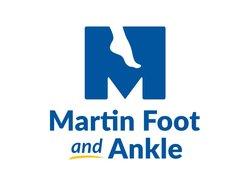Arch pain, a prevalent foot condition, manifests uniquely in individuals of various ages, presenting challenges that differ based on the developmental stage of the foot and underlying age-related factors. Understanding and managing arch pain across different age groups—ranging from children with evolving foot structures to adults facing occupational strain and seniors coping with age-related degeneration—demands nuanced approaches. By addressing the intricacies of arch pain across generations, individuals can gain insights into effective management techniques that cater to their distinct needs, ensuring optimal foot health and mobility throughout their lifespan.
Children
In children, arch pain is often caused by flat feet or overuse during physical activities. This condition is known as pediatric flatfoot and can cause discomfort and affect mobility. Symptoms include pain, fatigue, or clumsiness while walking or playing. Treatment involves supportive footwear, orthotics, and rest. In severe cases, medical intervention or physical therapy might be necessary to correct alignment issues or provide additional support.
Young Adults
Young adults may experience arch pain due to prolonged standing, improper footwear, or stress-related issues. Overpronation, which is a rolling inward of the foot, can strain the arch, leading to pain and discomfort. Treatments often involve supportive footwear, stretching exercises, and addressing underlying causes like overpronation. Custom orthotics can offer additional support and alleviate pain.
Older Adults
As individuals age, arch pain might result from conditions like plantar fasciitis or arthritis. Plantar fasciitis, characterized by inflammation of the tissue connecting the heel bone to the toes, causes stabbing pain in the arch. Treatments include rest, ice, stretching, orthotic inserts, and sometimes anti-inflammatory medications or corticosteroid injections. Arthritis can also contribute to arch pain, requiring targeted therapies like physical therapy, proper footwear, and pain management strategies.
Seniors
In seniors, arch pain can worsen due to age-related degeneration and weakened ligaments. Conditions like arthritis or structural changes in the feet can exacerbate discomfort. Seniors may benefit from supportive footwear, cushioned insoles, gentle stretching exercises, and low-impact activities to alleviate pain. Consulting a podiatrist is crucial for proper diagnosis and tailored treatment plans, which might include orthotics, physical therapy, or assistive devices to enhance stability and reduce pain.
Tailored approaches are necessary to manage arch pain across different age groups, considering age-specific causes, symptoms, and treatments. Children might require support and alignment correction, while adults often benefit from addressing lifestyle factors and overuse issues. Seniors dealing with age-related changes might need targeted therapies to manage chronic pain effectively.
Preventive measures such as wearing appropriate footwear, maintaining a healthy weight, and incorporating foot-strengthening exercises benefit all age groups. However, consulting a healthcare professional for accurate diagnosis and personalized treatment plans remains paramount for effective arch pain management.
Understanding the nuances of arch pain across various age demographics empowers individuals to take proactive steps toward maintaining healthy, pain-free feet throughout their lives. Prioritizing foot health not only ensures comfort and mobility but also contributes significantly to overall well-being across different stages of life. If you're experiencing arch discomfort, our podiatrists can help! Call us at (717) 748-5260 to schedule your appointment today.
